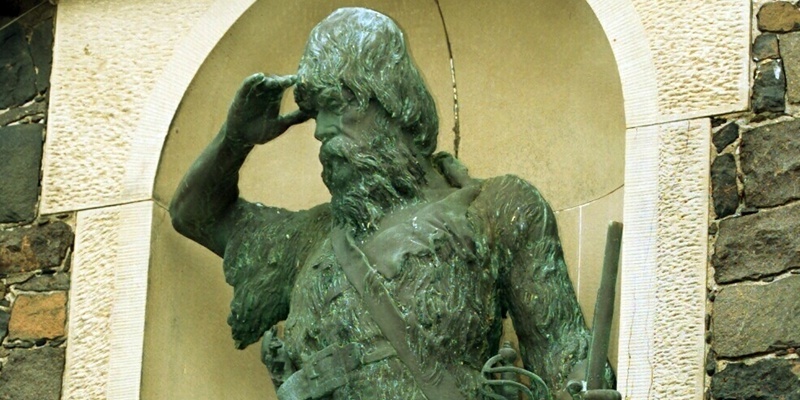Evidence disputing that a Fife mariner was the inspiration for Robinson Crusoe has been cast adrift in the village where he was born.
A new book has been published which challenges the long-held belief that Daniel Defoe’s famous character was based on Alexander Selkirk, of Lower Largo, who spent four years marooned on a deserted island.
Author Katherine Frank claims that the fictional castaway was in fact modelled on English adventurer Robert Knox, who was held prisoner in Ceylon, now Sri Lanka, in the 17th century.
Lower Largo is proud of its connection to Crusoe and is even twinned with Robinson Crusoe Island, where Selkirk spent his solitary years.
Owner of the village’s Crusoe Hotel, Stewart Dykes, this week rubbished Frank’s assertion and said there were far more similarities between Crusoe and Selkirk than Knox.
Dismissing it as conjecture, he said, “We have this man Knox who was captured in the populous island of Ceylon and imprisoned for almost 20 years and we have Selkirk who was marooned alone on an island. I’m sure that Defoe took bits and pieces from lots of places and put them together.
“The bottom line is that the main thread of the story was that Crusoe was marooned on a deserted island and Sri Lanka is not a deserted island nor ever has been. There are no similarities at all to Knox.”
Unless there was a huge upsurge of interest in Frank’s book, he said it was highly unlikely that Lower Largo’s historic ties with the castaway would be loosened.
Peter Aitken, chairman of Largo Area Community Council, is equally unconvinced by Frank’s claims.’Challenged’He said, “Other writers have challenged the link between Alexander Selkirk and Daniel Defoe’s Robinson Crusoe before and will no doubt do so again in the future. Our link has lasted for over 300 years, which speaks for itself.”
VisitScotland also reasserted the likeness of Crusoe’s fictional exploits and Selkirk’s ordeal.
A spokesman said, “There is no doubt that the tale of Robinson Crusoe bears a remarkable similarity to the real-life adventures of Alexander Selkirk.
“However, regardless of how much his story actually influenced Daniel Defoe when writing his most famous book, Selkirk was a fascinating character and a legend in his own right.
“Visitors to Lower Largo and to Scotland will continue to be inspired by his story and he is worthy of his place in Scottish history.”
Selkirk spent four years marooned on an island in the Juan Fernandez archipelago, off the coast of Chile, after a dispute with explorer William Dampier about the seaworthiness of his vessel.
London-born Knox, who worked with his father for the East India Company, was held captive in Ceylon for 19 years.
In Daniel Defoe, Robert Knox And The Creation Of A Myth, Frank points out that Defoe plagiarised parts of Knox’s memoirs for Captain Singleton and claims there are more similarities with Crusoe’s story than that of Selkirk.
Among her arguments are that both Knox and Defoe were slave-traders, while Selkirk was not. Both also found solace in the Bible, while Selkirk did not have a Bible.
While Selkirk was alone on his island, Knox was cared for by a ‘black boy’ while he has malaria and Robinson Crusoe also has a black boy.
